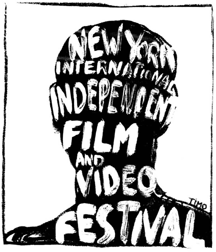Update 2/15/03
Great news! Another one of my films was recently chosen as an official selection in three film festivals. You can catch screenings at the Tiburon International Film Festival, the San Diego Latino Film Festival, and the Newport Beach Film Festival. Information is available through the links below. Dreaming in Black and White is directed by Joseph G. Eckhardt and stars Malik Yoba (New York Undercover, Copland, Cool Runnings, Soul Food, Law & Order).
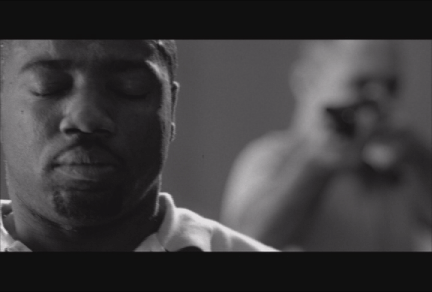 |
||||
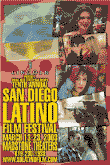 |
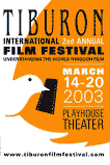 |
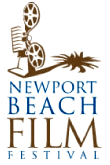 |
||
Update 1/30/03
Welcome to my new website! Rita thought I should start off 2003 with style, so she very generously offered to give my site a facelift. I hope you like the new look.
|
One of my recent films, Are You In?, has been accepted into the New York Independent Film Festival. The film has also been posted up on Kevin Spacey's website, triggerstreet.com. Just register (it's free) and search for Are You In? by choover. I hope you enjoy it! If you would like to catch a local screening, please join me on Friday, February 7 at the Laemmle Fairfax Cinema. The address is 7907 Beverly Blvd in West Hollywood. The screening begins at 10 pm. Tickets are available online at www.nyfilmvideo.com and cost just $10. |
||||||
I recently returned from the Sundance Film Festival in Park City, Utah. What a wonderful experience! I met many talented filmmakers from across the country, and was able to see many films that I would never have seen elsewhere. I particularly targetted short films during my stay in Park City. Many of the directors I have worked with in the past have chosen the strategy of shooting a short-format film in order to get noticed by the festivals and thereby obtain funding for a feature film. I watched around 20 short films, and was struck by what I call the "Sundance Formula". For all of their diversity, these films all had a lot in common, and I think this offers a clue as to what the Sundance selection committee looks for when choosing from among the numerous submissions they get.
Insofar as independent filmmakers generally feel betrayed by Hollywood's steadfast refusal to address controversial topics in their work, many of the Sundance films dealt with issues of sexuality, abuse, ethnic perspectives, and poverty. In fact, I estimate that 80% or more of the films I saw during the festival dealt with one of these topics. The result was curious: by rushing away from the Hollywood formulas, independent directors have inadvertently rushed to the same space. They have created a conformity of seperation in their refusal to become mainstream. What this means for the emergence of truly unique narratives in filmmaking, I do not know. Another common feature was the near-total lack of definitive endings in which issues are resolved. The ending of choice was one in which tensions mount to a crisis and are left to dangle unresolved, almost in defiance of the Hollywood practice of climax-denoument. While the unresolved approach certainly mimics reality to a closer degree, it does not altogether lead to a feeling of satisfaction when the credits start to roll. In some ways, I think that indie directors have thrown out the baby with the bathwater in defining themselves as the antithesis of mainstream film. Indeed, by the end of the festival, I was fairly pining to see a big-budget Hollywood effects film. Judging from my conversations with fellow composers and filmmakers, I was not alone in this sentiment. Having said this, I believe that independent films are absolutely vital to the creative health of the American film industry, especially when one considers how the mainstream market insists upon simply recycling one tired cliche after another. It would be nice to see independent directors take what they like from popular film and leave behind the rest, instead of feeling an obligation to be antagonistic towards anything perceived as 'industry'.
I also made several observations about the state of film music today, based in no small measure on my attendance at the BMI Composer's Panel. It strikes me that the traditional way of writing film music using themes and motives is on its way out. The new sound is what I tentatively am calling 'neo-texturalism'. The idea is that the music works only against the film, and makes no sense without it. Another way of thinking of it is that you would no more want to hear the music apart from the film than you would want to view the costume design or storyboards. The mass of sound-- either its density or sparseness --is its defining characteristic. Melody is eliminated, as are traditional concepts of counterpoint, voice leading, and harmony. In their place are ambience, sound effects, drones, and the extensive use of signal-processing tools to manipulate the listener's sense of space. George S. Clinton, composer of the Austin Powers films, shared an experience in which Mike Myers, who also works as Executive Producer on the films, asked him to remove thematic material and replace it with less identifiable textures of sounds. For those of us who favor the use of lietmotifs in our work, this type of request must make us rest uneasy, signalling, as it does, the death of thematic music.
I was strongly reminded of Mark Prendergast's The Ambient Century, in which Brian Eno describes film music as: "...music made to support something else, an evocation of a psychological space within which something is intended to happen, a sense of music which presented a climate but left out the action...like constructing geography and not populating it." While film music, like all program music, has always served something greater than itself, I think the eradication of thematic content represents a new juncture in the filmmaking experience. To become completely transparent within the context of a film pushes the composer to attain a hitherto-unthinkable level of subtlety in his work.
The orchestra, so near and dear to composers, is relegated to simply one sound-producing node among many. I wonder what this means to composers, many of whom strive to create the most "realistic" sampled orchestra possible. If the orchestra is simply one item in the buffet table of sounds available to us, does it still make sense to strive for near-perfection in our ability to trick the listener into believing that what he hears is live? After all, the criteria by which a neo-textural score may be judged successful must include the score's ability to be completely forgettable once the lights come up. As long as the music succeeds in becoming completely ambient, does it matter if the composer's sample library costs $3000 or $300? Has the respectable art of faking an orchestra to the nth degree now become passe'?
And speaking of faking orchestras, I have recently completed a mock-up of Rimsky-Korsakov's Scheherezade, using the GigaStudio and Cubase. Take a listen and tell me what you think. I have already formed some opinions; does anyone know where I can get some realistic sounding solo string samples?
